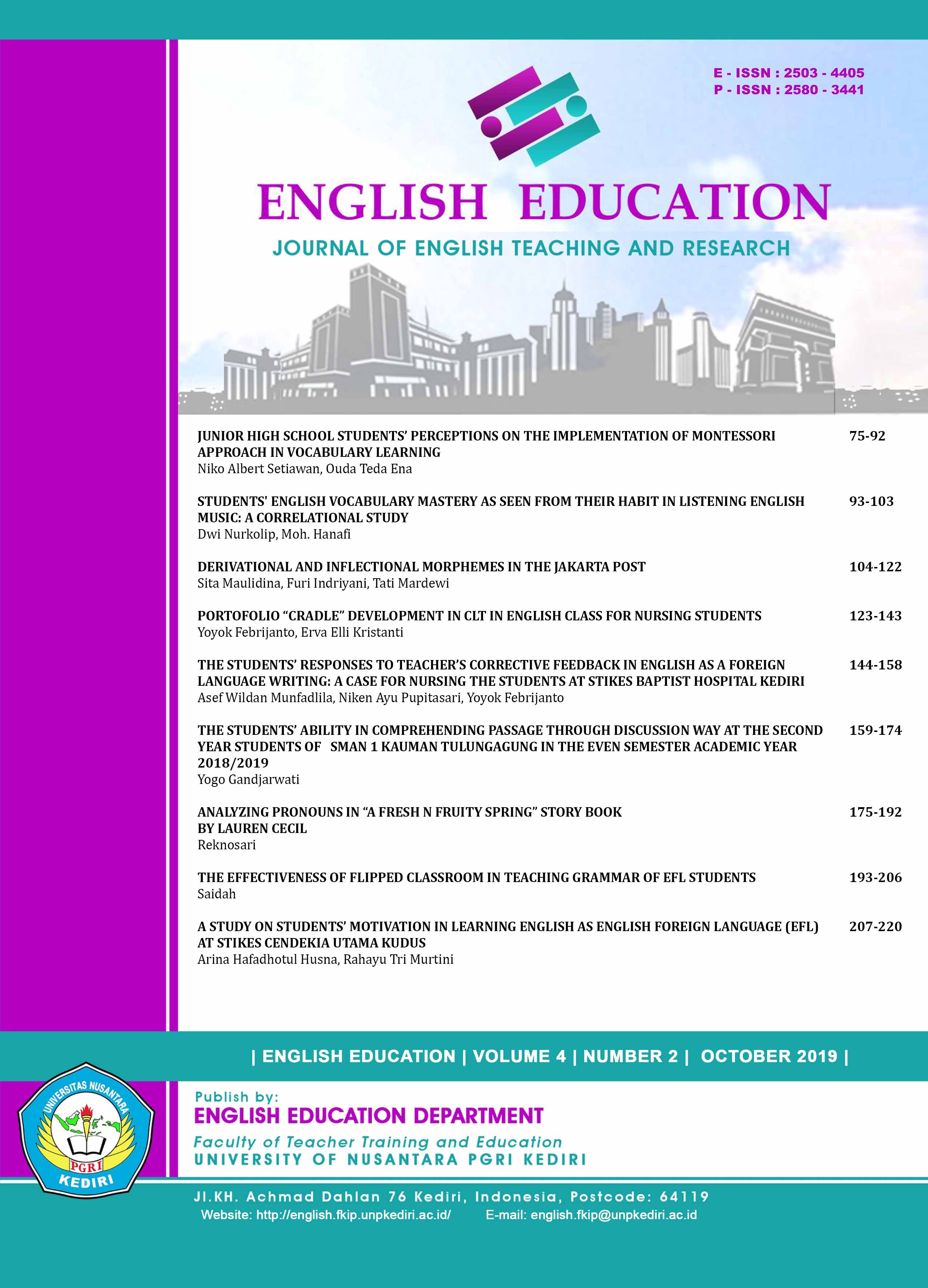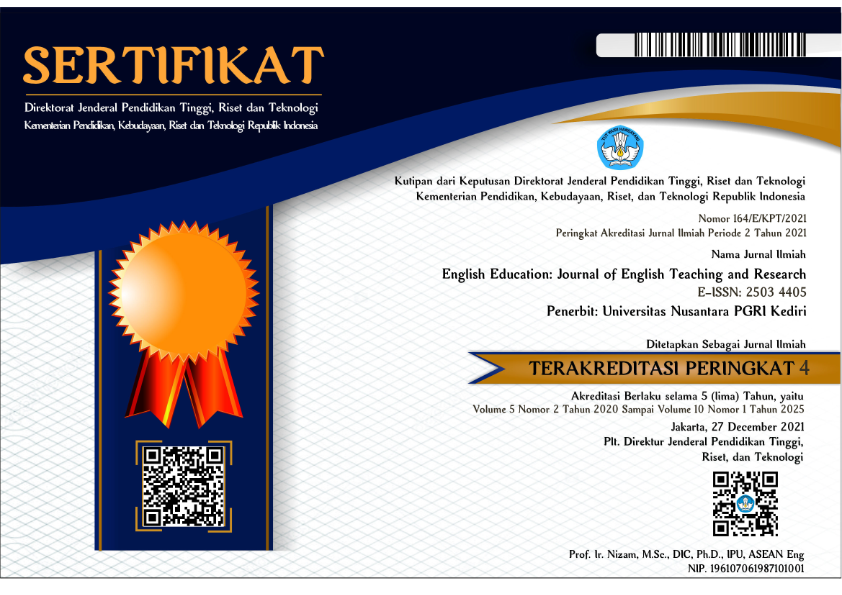ALTERNATIVE ASSESSMENT: PORTFOLIO "CRADLE" IN CLT FOR ENGLISH IN NURSING INCREASING STUDENTS’ ACHIEVEMENT
DOI:
https://doi.org/10.29407/jetar.v4i2.13714Abstract
New forms of assessment are needed to replace traditional multiple-choice and other items that test lower-order skills. One alternative assessment in communicative language teaching (CLT) is portfolios. In portfolios, students collect assignments with specific goals that demonstrate the efforts, progress, and achievements in a particular area (e.g. mastery of English in nursing). “CRADLE” is acronym portfolios designed into 6 parts, namely Collecting, Reflecting, Assessing, Documenting, Linking, and Evaluating focusing procedures and documentation achievement in teaching English in nursing. This R&D aims to develop an assessment tool for learning English in nursing based on CLT adapted from Borg and Gall's method. The subjects involved 45 students, 2 teachers of English in nursing, 2 nursing experts, and 1 hospital practitioner who were concerned with teaching English in nursing. The results showed that students' understanding was sufficient category with an average score of 26.11 and the maximum score achieved by students was 32 as many as 10 students (22.2%), the majority of respondents were getting a score of 25. After intervention, the level of students’ understanding was obtained an average score of 27.22. The data analysis results of Wilcoxon Sign Rank Test was obtained p=0.020 and Z-score = -2,324. Giving intervention increased level of students’ understanding of 12 respondents (26.7%), decreasing understanding of 3 respondents (6.7%) and a constant understanding of 30 respondents (66.6%). The minimum score obtained by students after intervention was 19 and the maximum score was 36. In conclusion, the students had increasing understanding of English in nursing in order to develop assessment by maximizing students’ competency in CLT for English in nursing through alternative assessment of portfolios CRADLE. It can be used to build a comprehensive picture of what students can do in a second language.
Downloads
Downloads
Published
Issue
Section
License
Authors who publish with this journal agree to the following terms:
- Copyright on any article is retained by the author(s).
- The author grants the journal, the right of first publication with the work simultaneously licensed under a Creative Commons Attribution License that allows others to share the work with an acknowledgment of the work’s authorship and initial publication in this journal.
- Authors are able to enter into separate, additional contractual arrangements for the non-exclusive distribution of the journal’s published version of the work (e.g., post it to an institutional repository or publish it in a book), with an acknowledgment of its initial publication in this journal.
- Authors are permitted and encouraged to post their work online (e.g., in institutional repositories or on their website) prior to and during the submission process, as it can lead to productive exchanges, as well as earlier and greater citation of published work.
- The article and any associated published material is distributed under the Creative Commons Attribution-ShareAlike 4.0 International License








 Article template
Article template



